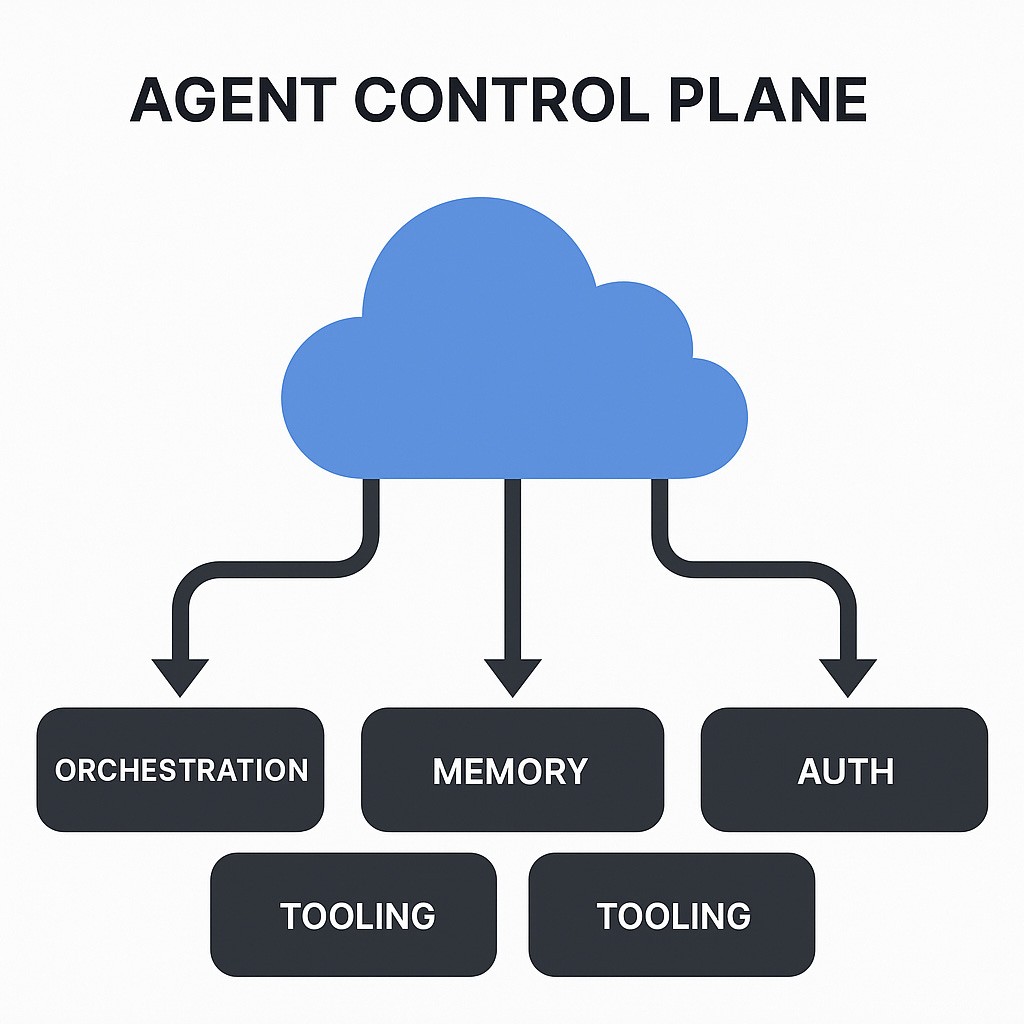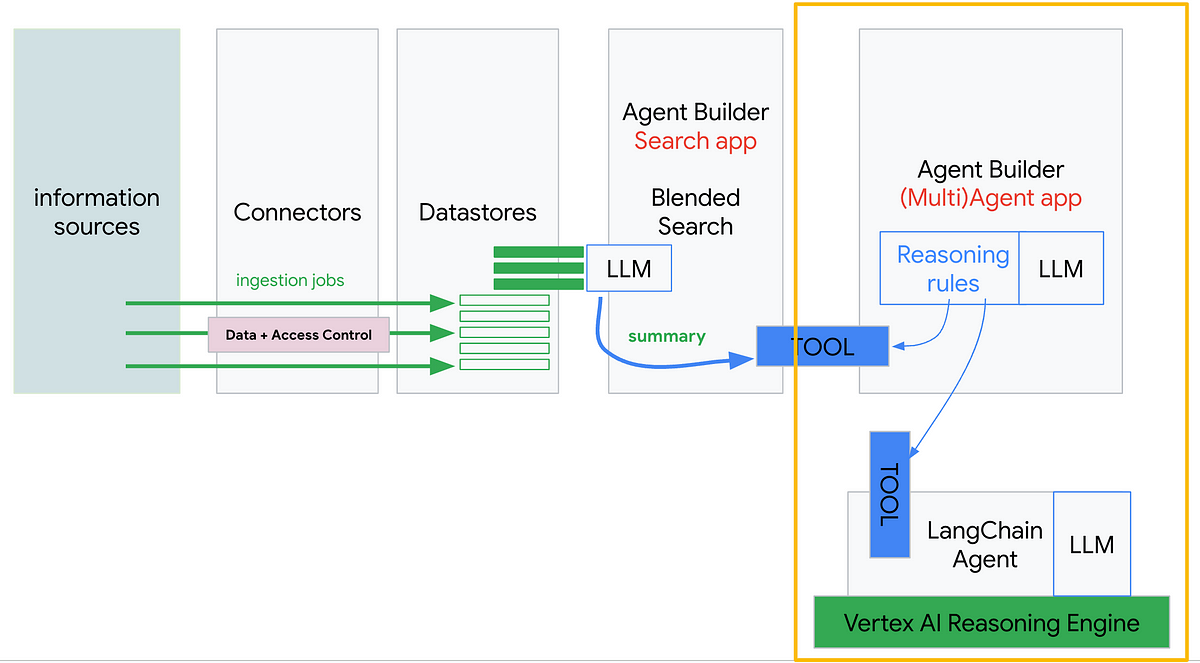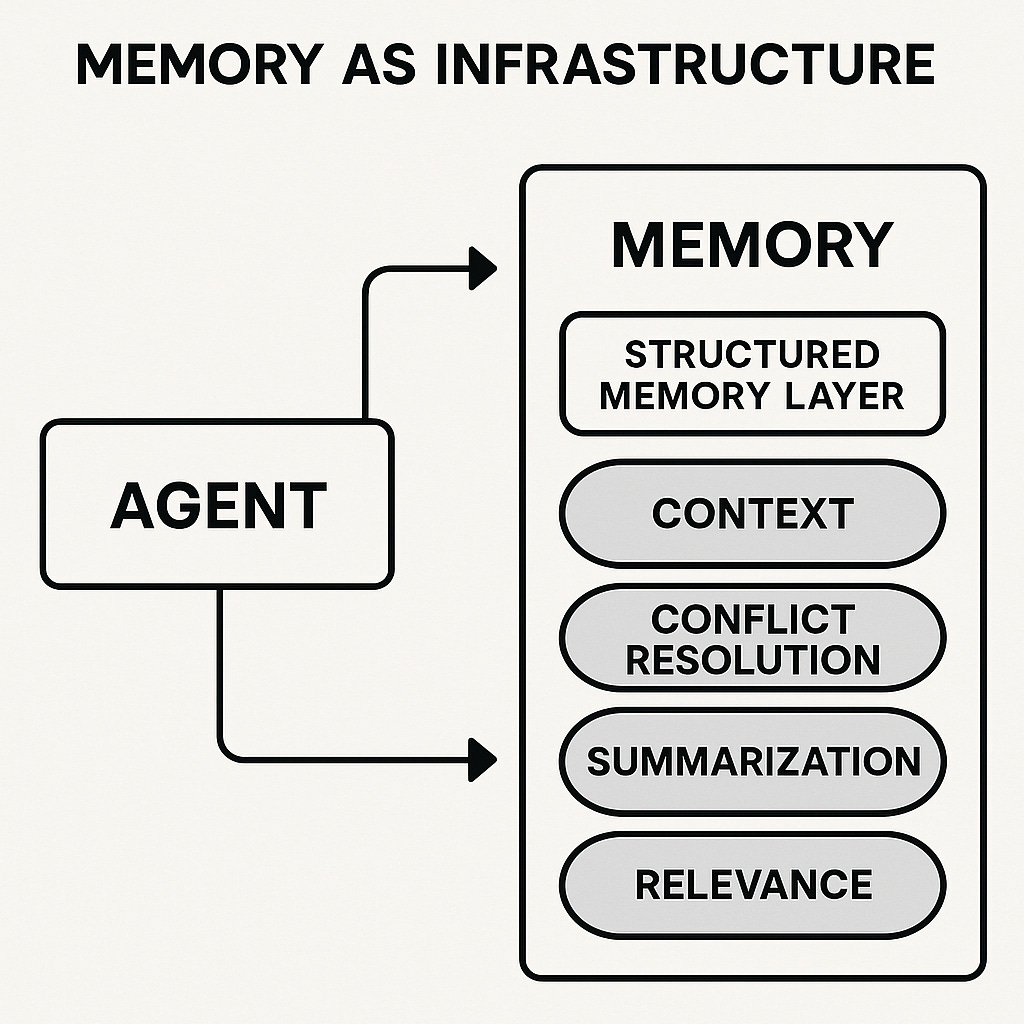Agent Infrastructure and Control Planes
From inference to autonomy: architecting the Agent Runtime environment where Control Planes meet enterprise production
The last 18 months validated the promise of LLMs. But while frontier models are getting cheaper and more capable, the next wave of complexity is about execution—not inference. Enterprises aren’t struggling with model access. They’re struggling with orchestration, memory, durability, and governance.
Enter the agent infrastructure stack.
If software was about deterministic instruction execution, and ML infra was about data pipelines and model tuning, agent infra is about managing stochastic, semi-autonomous systems that learn, act, and retry—without a human in the loop.
This is not an extension of existing infra. It’s a clean-slate redesign. Below are the five categories defining the stack.
🔧 1. Agent Builders: The New Interface Layer
Think LangChain, CrewAI, and Sema4. These frameworks abstract away the glue logic and let teams stitch models, tools, memory, and triggers into goal-driven agents.
Most enterprise prototypes today are built on glue-code sprawl: brittle chains of prompts, scripts, and Zapier-style logic. Agent builders aim to replace this with something composable, observable, and production-ready.
🧠 Strategic Insight: This layer will be hard to displace once embedded. Expect 2–3 dominant winners, each with distinct abstraction levels (think: Unix → Python → React).
⏱ 2. Persistence Engines: Durable Orchestration for Non-Determinism
Traditional workflow orchestrators (Airflow, Temporal) assume deterministic step execution. Agents violate that assumption. Their logic branches, retries, and re-plans on the fly.
That’s why companies like Zipline, Inngest and Hatchet are gaining traction. They act as a queue/cron + state store + retry engine—purpose-built for stochastic systems.
🧠 Strategic Insight: This category is inevitable. It will underpin any agent that runs longer than 15 seconds or involves a multi-step workflow. Bonus: strong data flywheel from agent execution traces.
🧠 3. Memory: Statefulness as Infrastructure
Current-gen agents are stateless. Each task begins with a fresh prompt. That’s broken. The move toward long-term memory will define whether agents feel brittle or adaptive.
Emerging vendors like Pinecone, Mem0 and Zep are trying to build structured memory layers—handling context, conflict resolution, summarization, and relevance—all with low latency.
🧠 Strategic Insight: Memory is both a UX unlock and an enterprise liability. Expect standards (e.g., memory protocols) to emerge for auditing, compression, and conflict resolution. This is a greenfield category but risks being swallowed by incumbents or embedded into agent frameworks.
🌐 4. Web & Tool Interaction: Killing RPA for Good
APIs are not enough. Most enterprise tools still rely on human GUIs. Agents need to control UIs programmatically. That’s the role of headless browsers + browser-native agent protocols like MCP.
Platforms like Browserbase let agents interact with SaaS interfaces as if they were humans. This is where RPA should have gone.
🧠 Strategic Insight: This is a linchpin for real-world integration, and it’s already splintering into protocol vs. execution layers. Whoever wins here will become the Zapier + Puppeteer for agents.
🔐 5. Agent Identity & Auth: No Enterprise Rollout Without This
Today’s agent security posture is terrifying. Tokens are hardcoded. Agents “borrow” user IDs. There’s no audit trail or permission boundary.
Agent-native auth systems like Composio and Arcade are building scoped, verifiable identities for agents—think service accounts + RBAC + session tracing + audit logs.
🧠 Strategic Insight: If you’re selling to a CISO, this is the entry point. Long-term, it becomes the enforcement layer for trust and compliance across the stack.
🧠 The Control Plane War Has Begun
Inference is now a solved problem—API pricing is dropping, quality is improving, and access is ubiquitous. The bottleneck has moved upstream. What’s missing is an execution substrate that can coordinate stochastic, goal-seeking agents at scale.
That substrate is the agent control plane: the orchestration, memory, auth, and tooling layers that allow autonomous agents to act reliably across real-world systems. Today, no one owns it. There’s no standard runtime, no dominant memory protocol, no consensus on agent identity or benchmarking.
This is the power vacuum. Whoever wins the control plane will define how agents are built, deployed, and governed—just as Kubernetes defined modern app orchestration. The biggest AI infra companies of this cycle won’t compete on inference. They’ll own the scaffolding that makes inference useful.








AWS Agent core addresses these - any initial comments on it?